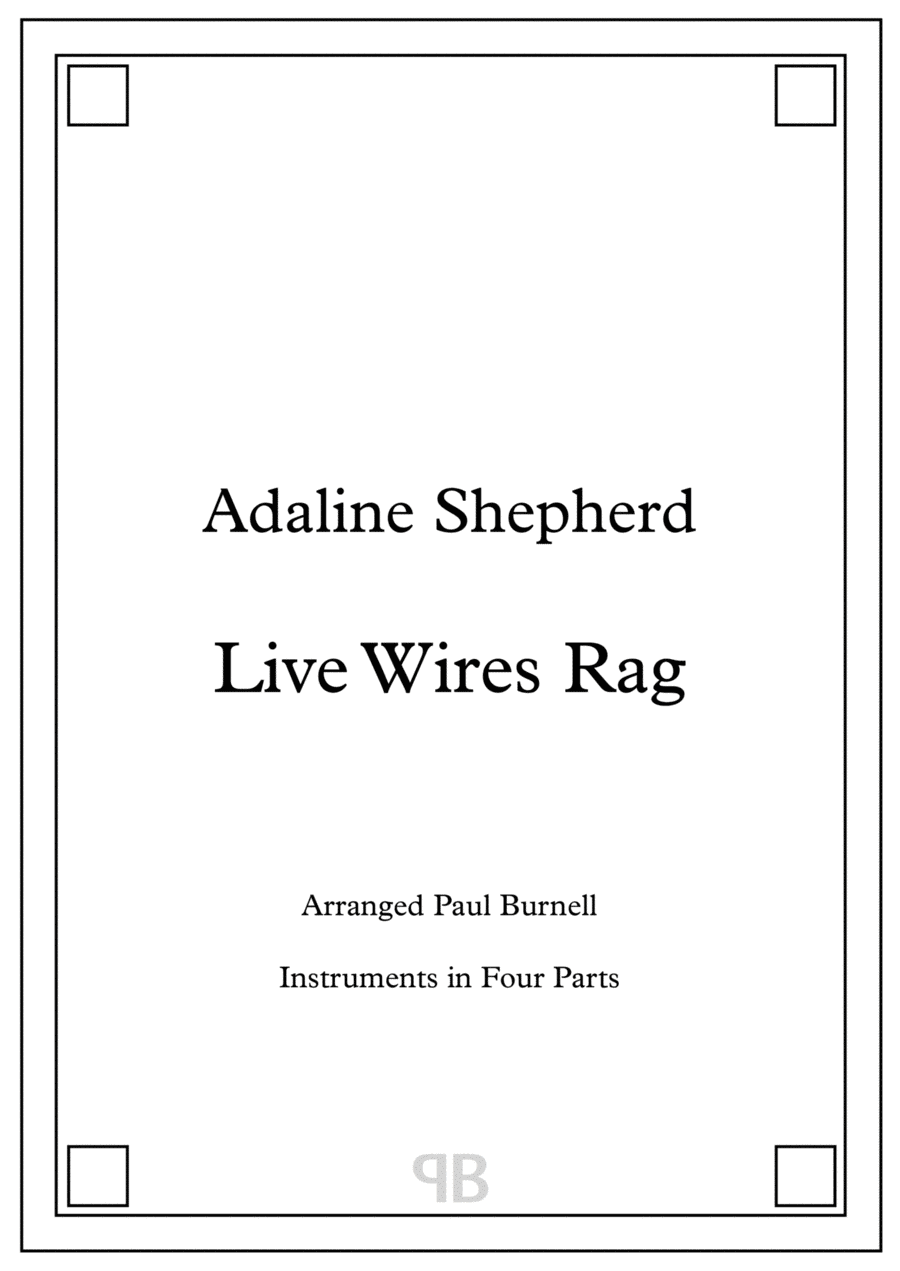Small Ensemble Alto Recorder,Baritone Recorder,Tenor Recorder - Level 3 - Digital Download SKU: A0.835905 Composed by Adaline Shepherd. Arranged by Paul Burnell. 20th Century,Ragtime. Score and parts. 20 pages. Paul Burnell #6716143. Published by Paul Burnell (A0.835905). Live Wires Rag by Adaline Shepherd, arranged by Paul Burnell for instruments in four parts.Download comprises both score and partsDuration 2:55Score in C The arrangement is suitable for multiple quartet combinations with parts available (and potential instrumentations suggested) as follows:Part 1: C, Eb (Flute, Oboe, Alto Recorder, Eb Clarinet, Violin 1)Part 2: C, Bb, G (Alto Flute, Oboe, Tenor Recorder, Bb Clarinet, Violin 2)Part 3: C, Bb, Eb, F (Bb Clarinet, Bass Recorder, Alto Saxophone, Horn in F, Violin 3, Viola)Part 4: C, Bb, F (Bassoon, Great bass Recorder, Tenor Saxophone, Horn in F, 'Cello)Part 4 may be played or doubled an octave lower than written - using the 'Bass Clef up 8' part.Any other appropriate instruments, even if not suggested above, may play.Play cue-sized notes in brackets where main notes are out of range or inconvenient.Programme note:Adaline Shepherd (1883 – 1950) was an American composer of piano pieces. In her twenties, she composed three ragtime pieces: Pickles and Peppers (1906), Wireless Rag (1909), and Live Wires Rag (1909). She married Frederick Sherman Olson in 1910, and thereafter used his last name as her own. After her marriage, she retired from composition, and her compositions were unknown to her remaining family by the 1970s until reporters contacted them.The dedication in the original piano composition reads: Dedicated to the real Live Wire Maurice A. Richmond.The metaphorical use of 'live wire' likely emerged around the year 1900, and applied the words used in electrical circuitry to describe an energetic and unpredictable person.
